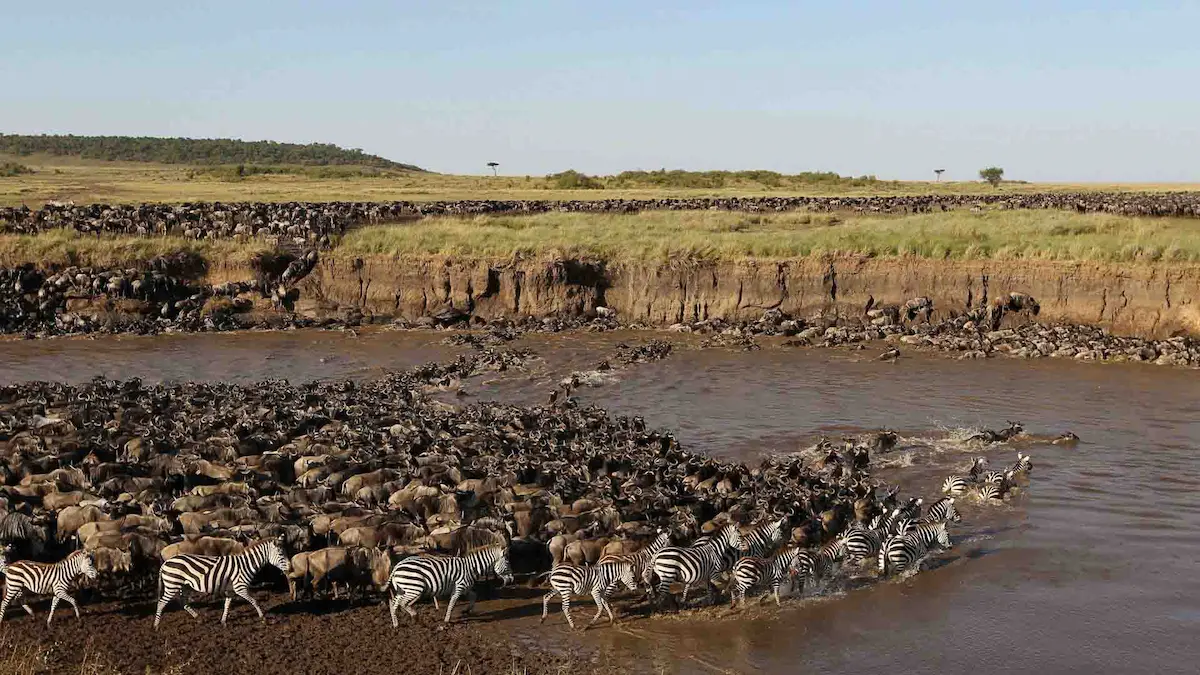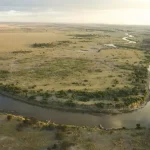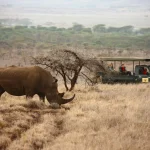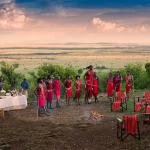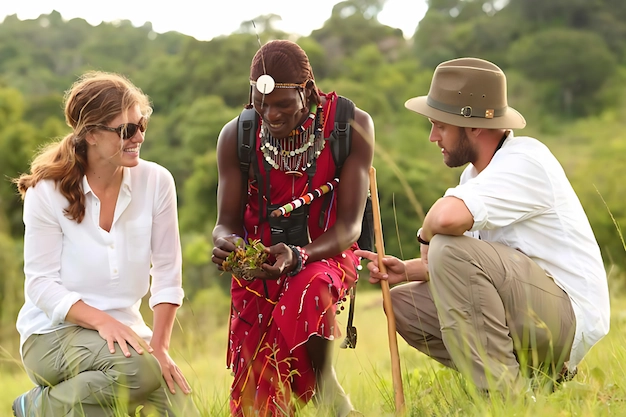The Great Wildebeest Migration is one of the most awe-inspiring natural spectacles on Earth, attracting thousands of travelers to Tanzania and Kenya each year. Over 1.5 million wildebeests, accompanied by hundreds of thousands of zebras and gazelles, traverse the Serengeti-Mara ecosystem in search of fresh grazing and water. This guide provides everything you need to know to plan your Wildebeest Migration Safari for 2025 – 2026, including key dates, locations, and tips for an unforgettable experience
Key Highlights of the Wildebeest Migration.
1. Calving Season (January to March)
The migration begins in the southern Serengeti, particularly in the Ndutu and Ngorongoro Conservation Area. From late January to early March, over 500,000 wildebeest calves are born daily, creating a vibrant and bustling environment perfect for a Wildebeest Migration Safari 2025-2026. This period is also prime for predator-prey interactions, as lions, cheetahs, and hyenas target the vulnerable newborns
2. Grumeti River Crossings (May to July)
As the herds move north, they face their first major obstacle: the Grumeti River. Known for its large crocodile population, this crossing is less dramatic than the Mara River but still offers thrilling wildlife viewing opportunities for those experiencing the Wildebeest Migration Safari 2025-2026. The best time to witness this is from late May to early July
3. Mara River Crossings (July to October)
The most iconic phase of the migration, the Mara River crossings, occurs from July to September. Thousands of wildebeests brave strong currents and crocodile-infested waters, creating heart-pounding scenes. This is the peak season for safaris, with the best viewing spots in the northern Serengeti and Masai Mara during the Wildebeest Migration Safari 2025 – 2026
4. Return South (October to December)
As the short rains return, the herds begin their journey back to the southern Serengeti. This phase offers quieter safari experiences and a chance to see large herds preparing for the next calving season, making it a unique part of the Wildebeest Migration Safari 2025-2026.
Best Time to Visit for the 2025 – 2026 Migration
- January to March: Calving season in the southern Serengeti.
- May to July: Grumeti River crossings in the western Serengeti.
- July to September: Mara River crossings in the northern Serengeti and Masai Mara.
- October to December: Return migration to the southern Serengeti
Planning Your Safari!
1. Choosing the Right Location
- Southern Serengeti: Ideal for calving season (January-March).
- Western Serengeti: Best for Grumeti River crossings (May-July).
- Northern Serengeti: Perfect for Mara River crossings (July-September) during the Wildebeest Migration Safari 2025-2026.
2. Accommodation Options
- Luxury Lodges: Serengeti Migration Camp, Sayari Camp, and Mara River Lodge.
- Mid-Range Camps: Nyikani Migration Camp and Nasikia Mobile Camp.
3. Safari Packages.
- 6 – Day Safari: Focused on Mara River crossings (July-September).
- 7-Day Safari: Combines Serengeti and Ngorongoro Crater.
- 10-Day Safari: Covers the entire migration cycle, ideal for a comprehensive Wildebeest Migration Safari 2025-2026.
Tips for a Successful Migration Safari.
Book Early: Migration safaris are in high demand, especially during peak seasons like the Mara River crossings. Secure accommodations and guides at least 6-12 months in advance to ensure a spot for your Wildebeest Migration Safari 2025-2026.
Pack Smart: Bring neutral-colored clothing, a good camera with a zoom lens, binoculars, and sun protection.
Stay Flexible: The migration’s timing can vary due to weather patterns. Build flexibility into your itinerary to maximize your chances of witnessing key events.
Engage Expert Guides: Knowledgeable guides enhance your understanding of wildlife behavior and migration patterns.
Why 2025 – 2026 Is the Perfect Time to Visit.
The Wildebeest Migration Safari 2025-2026 promises an unforgettable adventure, with well-preserved ecosystems and improved safari infrastructure. Conservation efforts continue to protect this iconic event, ensuring a sustainable and enriching experience for travelers.

